Multiplex Immunoassay Techniques for On-Site Detection of Security Sensitive Toxins
- PMID: 33233770
- PMCID: PMC7699850
- DOI: 10.3390/toxins12110727
Multiplex Immunoassay Techniques for On-Site Detection of Security Sensitive Toxins
Abstract
Biological toxins are a heterogeneous group of high molecular as well as low molecular weight toxins produced by living organisms. Due to their physical and logistical properties, biological toxins are very attractive to terrorists for use in acts of bioterrorism. Therefore, among the group of biological toxins, several are categorized as security relevant, e.g., botulinum neurotoxins, staphylococcal enterotoxins, abrin, ricin or saxitoxin. Additionally, several security sensitive toxins also play a major role in natural food poisoning outbreaks. For a prompt response to a potential bioterrorist attack using biological toxins, first responders need reliable, easy-to-use and highly sensitive methodologies for on-site detection of the causative agent. Therefore, the aim of this review is to present on-site immunoassay platforms for multiplex detection of biological toxins. Furthermore, we introduce several commercially available detection technologies specialized for mobile or on-site identification of security sensitive toxins.
Keywords: electrochemical biosensor; low molecular weight toxins; multiplex immunoassay platforms; on-site detection; optical biosensor; proteotoxins; security sensitive toxins.
Conflict of interest statement
C.P. and T.E. are current employees of Bruker Optik GmbH. Bruker Optik GmbH has licensed electrochemical biochip technology according to EP 1200817 B1 from Fraunhofer Institute for Silicon Technology (Itzehoe, Germany) and is manufacturer of the pBDi platform. This does not influence our adherence to all policies on sharing data and materials.
Figures
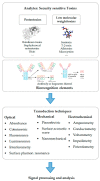

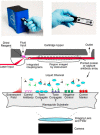
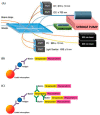

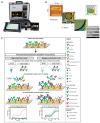
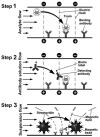
Similar articles
-
An Electrochemical Fiveplex Biochip Assay Based on Anti-Idiotypic Antibodies for Fast On-Site Detection of Bioterrorism Relevant Low Molecular Weight Toxins.Toxins (Basel). 2019 Nov 28;11(12):696. doi: 10.3390/toxins11120696. Toxins (Basel). 2019. PMID: 31795179 Free PMC article.
-
Biological Toxins as the Potential Tools for Bioterrorism.Int J Mol Sci. 2019 Mar 8;20(5):1181. doi: 10.3390/ijms20051181. Int J Mol Sci. 2019. PMID: 30857127 Free PMC article. Review.
-
Development of an ELISA microarray assay for the sensitive and simultaneous detection of ten biodefense toxins.Analyst. 2014 Oct 21;139(20):5093-102. doi: 10.1039/c4an01270d. Epub 2014 Aug 12. Analyst. 2014. PMID: 25112421 Free PMC article.
-
Simultaneous quantification of five bacterial and plant toxins from complex matrices using a multiplexed fluorescent magnetic suspension assay.Analyst. 2009 Oct;134(10):2028-39. doi: 10.1039/b911525k. Epub 2009 Aug 21. Analyst. 2009. PMID: 19768210
-
[On-site detection of bioterrorism-relevant agents : Rapid detection methods for viruses, bacteria and toxins - capabilities and limitations].Bundesgesundheitsblatt Gesundheitsforschung Gesundheitsschutz. 2016 Dec;59(12):1577-1586. doi: 10.1007/s00103-016-2463-z. Bundesgesundheitsblatt Gesundheitsforschung Gesundheitsschutz. 2016. PMID: 27778086 Review. German.
Cited by
-
Development of a Multiplex HIV/TB Diagnostic Assay Based on the Microarray Technology.Biosensors (Basel). 2023 Sep 20;13(9):894. doi: 10.3390/bios13090894. Biosensors (Basel). 2023. PMID: 37754128 Free PMC article.
-
Current Developments in Diagnostic Assays for Laboratory Confirmation and Investigation of Botulism.J Clin Microbiol. 2022 Apr 20;60(4):e0013920. doi: 10.1128/JCM.00139-20. Epub 2021 Sep 29. J Clin Microbiol. 2022. PMID: 34586891 Free PMC article. Review.
-
Substrate Materials for Biomolecular Immobilization within Electrochemical Biosensors.Biosensors (Basel). 2021 Jul 15;11(7):239. doi: 10.3390/bios11070239. Biosensors (Basel). 2021. PMID: 34356710 Free PMC article. Review.
-
Innovative and Highly Sensitive Detection of Clostridium perfringens Enterotoxin Based on Receptor Interaction and Monoclonal Antibodies.Toxins (Basel). 2021 Apr 8;13(4):266. doi: 10.3390/toxins13040266. Toxins (Basel). 2021. PMID: 33917845 Free PMC article.
-
Microfluidic Flow Injection Immunoassay System for Algal Toxins Determination: A Case of Study.Front Chem. 2021 Mar 4;9:626630. doi: 10.3389/fchem.2021.626630. eCollection 2021. Front Chem. 2021. PMID: 33748075 Free PMC article.
References
-
- Franz D.R. Textbook of Military Medicine, Part 1: Medical Aspects of Chemical and Biological Warfare. Office of The Surgeon General at TMM Publications, Department of the Army; Washington, DC, USA: 1997. Defense against toxin weapons; pp. 603–619.
-
- The Australia Group-Biological Agents. [(accessed on 21 October 2020)]; Available online: https://www.dfat.gov.au/publications/minisite/theaustraliagroupnet/site/....
-
- Organization for the Prohibition of Chemical Weapons Scientific, Advisory Board SAB-II Annex 1. [(accessed on 19 November 2020)];1999 Available online: https://www.opcw.org/resources/documents/subsidiary-bodies/scientific-ad....
Publication types
MeSH terms
Substances
LinkOut - more resources
Full Text Sources

